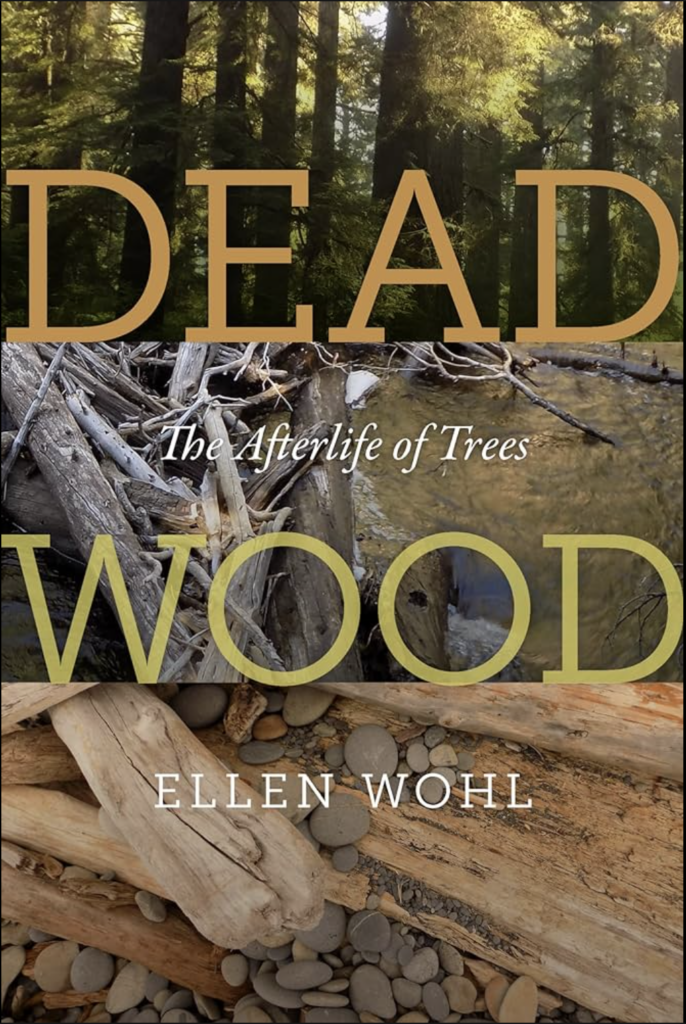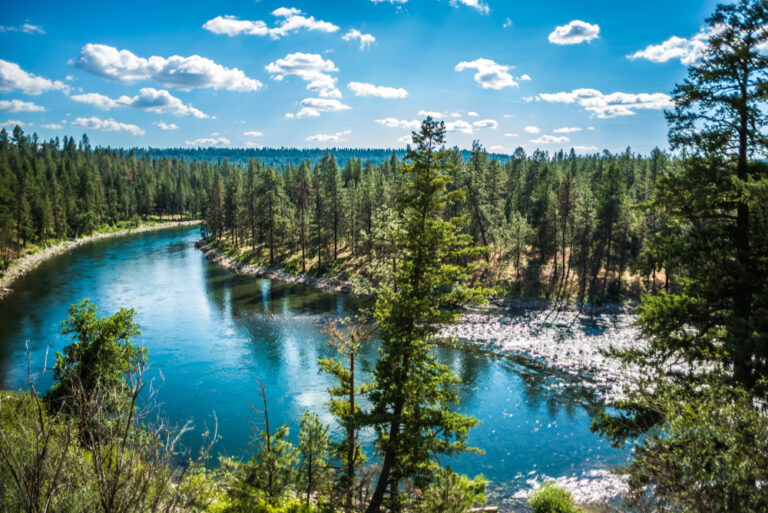(American West/Nature, 2022)
By Claire Thompson
As a trail worker, my days often revolve around fallen and dead trees. So when I spied Ellen Wohl’s “Dead Wood: The Afterlife of Trees” in Bonner’s Books (a cozy haven in Bonners Ferry), I was instantly intrigued.
In just 168 paperback pages (the perfect size to slip into your overnight pack), this slim volume touches on plate tectonics and glacial dynamics, microbes and fungi and mites, songbirds and salamanders and flying squirrels, diatoms and gribbles, deep-sea hydrothermal vents, and more. Every page of “Dead Wood” holds a wealth of natural knowledge, offered in prose as elegant as it is approachable. Wohl describes Canada’s lower Mackenzie River as “a braided rope starting to unravel” and a black bear as “darker than the heaviest shadow.”

And all of it connects to the postmortem travels of trees. “Dead Wood” follows three trees—an Engelmann spruce in the Colorado Rockies, a western redcedar in the Olympics, and a balsam poplar in British Columbia’s boreal forest—from before germination to long after death. Through each tree’s life story, Wohl illustrates the myriad ways it shapes, and is shaped by, its surrounding ecosystems.
Dead Wood is rich with potential metaphor (“the growing sapling thrives to the degree that it can develop its own, interior ecosystems”) and quietly profound. Wohl writes of how logjams—those places of stuckness, the clutters of debris that slow a stream’s flow—create rich and fertile habitat for creatures from sport fish to aquatic mosses, the same way nurse logs nurture young seedlings, standing snags house songbirds, and driftwood supports its own communities of unique plants. Wohl encourages us to shift our aesthetic perspective, to see beauty in the “fecund messiness” of dead logs—and to think differently about the afterlife of all beings, including ourselves.













